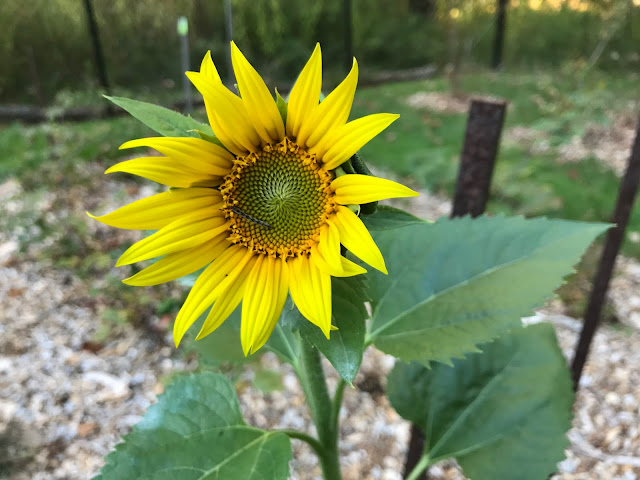A heavy fog lingers in the wetlands into mid-morning today. It will warm to high 70s, and, by the looks of the 10-day forecast, no frosty temperatures in the near-term. Bumblebees are still gathering nectar, although flowers are harder to find this time of year. A late-blooming sunflower in our backyard offers a colorful target for a few insects. This is a reminder to self to plant some annuals late in the summer to provide pollinators more options, as the growing season grows longer. I think this lone sunflower was planted by a squirrel.
Sunday, October 15, 2017
Saturday, October 14, 2017
Still No Frost
Northern water snake shedding its skin.
Monarch butterflies are
still flying about. These late summer/fall adult monarchs are different than those
emerging earlier in summer. Instead of a 2-4 week lifecycle, the fall monarchs
live up to nine months—these are the super monarchs that fly all the way to central
Mexico to overwinter. Peak migration in our area is typically mid-September.
Whether the monarchs that are still flying around here in October are destined to fly south
is unknown. The consensus is that this has been a pretty good year for monarchs.
Many other species are preparing for winter
too: blue jays—not just squirrels—are gathering and storing acorns; flocks of
Canada geese are flying south; witch-hazel, a forest understory shrub, is just
now sporting its yellow, spidery-like flowers. It’s a beautiful time to be out
in the woods.
Witch-hazel flowering
Subscribe to:
Posts (Atom)
First Walks of 2024
We rise early, well before sunrise. It helps to go to bed early. Fortunately the New Year's Eve celebratory fireworks in the neighborhoo...

-
The oldest known hardwood tree in North America--at 700 years old--is a black gum tree tucked away in a hummocky swamp in southern New Hamps...
-
On Sunday I brought home a fragment of an animal skeleton from Seapoint Beach. At first it looked like a baby dragon, but that's just to...
-
A week ago--on a coldish January day--a small flock of robins ate all the berries from one winterberry shrub in our yard. They flew off as q...





